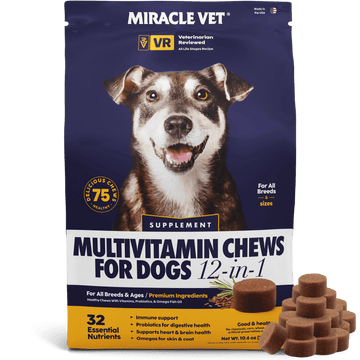-
Understand how essential amino acids, fatty acids, and crude protein help build muscle and energy
-
Learn to balance protein sources, fiber sources, and carbs to reduce the risk of obesity
-
Compare the benefits of fresh food, homemade diets, and commercial pet food brands like Purina
-
Discover how dog food ingredients support the immune system, digestive health, and kidneys
-
Get guidance backed by the Association of American Feed Control Officials (AAFCO) and the American College of Veterinary Nutrition
Helping Your Dog Gain Weight with the Right Ingredients
Helping a dog gain weight isn’t just about feeding more—it’s about choosing the best food with the right nutrients. A safe approach uses a healthy diet built on high-quality food products that deliver energy, build lean muscle, and support the nervous system.
Whether you're feeding balanced home-cooked dog food, raw food, or commercial pet food, the right mix of essential nutrients—proteins, fats, carbohydrates, trace minerals, and vitamins—will support optimal dog food nutrition.
Weight gain should be gradual and healthy. Sudden overfeeding can lead to digestive upset, diarrhea, or long-term issues like the risk of obesity and kidney disease. Choosing the right dog food ingredients tailored to your pet's unique needs makes all the difference. The best results often come from feeding balanced dog food rich in whole ingredients and customized to your dog's stage of life and energy needs.
Protein: The Foundation of Muscle Growth
Proteins are critical in dog diets because they supply essential amino acids, which help with muscle development, reproduction, and tissue repair. Protein is the most important macronutrient when your goal is healthy weight gain.

Best Protein Sources Include:
-
Poultry like chicken and turkey, which are lean and highly digestible
-
Dairy (e.g., cottage cheese, yogurt, and eggs), offering bioavailable nutrients like selenium and calcium
-
Fish, such as salmon or sardines, are rich in omega-3 fatty acids and beneficial for dogs with allergies or skin issues
-
Organ meats, including liver and kidney, are loaded with trace minerals and high in biological value
These sources of protein offer varying crude protein levels but should be evaluated for digestibility and nutrient density. The biological value (BV) is a measure of how efficiently your dog can use the protein—meat, eggs, and fish typically rank highest.
According to the American College of Veterinary Nutrition, high-BV proteins are especially important for young dogs, underweight rescues, and dogs recovering from illness.
Feeding balanced dog food that includes a variety of proteins and fats for dogs helps maintain lean mass and energy levels over time.
What About Crude Protein?
Crude protein is listed on all commercial pet food and refers to the total protein content measured through nitrogen analysis. It's important to understand this doesn't reflect digestibility or quality.
AAFCO and the Association of American Feed Control Officials recommend:
-
Minimum crude protein of 22% for puppies and reproducing females
-
18% for adult maintenance
However, feeding excess protein isn't always beneficial. For dogs with compromised kidneys, less protein (but higher quality) may be safer. Too much undigested protein can increase moisture retention and burden the kidneys, potentially leading to kidney disease over time.
Always consider your dog's life stage, activity level, and health status before increasing protein. When in doubt, consult your vet and consider switching to balanced dog food formulated specifically for weight gain.

Healthy Fats: Calorie-Dense & Nutrient-Packed
Fats are essential for energy and healthy weight gain. They contain over twice the calories of protein or carbohydrates and are packed with fatty acids that support the immune system, hormone production, and brain development.
Top Fat Sources:
-
Fish oil: Loaded with omega-3s, it supports joints, skin, and coat
-
Chicken fat: Common in high-quality dog food ingredients for its flavor and energy
-
Flaxseed oil: A good plant-based omega-3 source
-
Egg yolks and organ meats: High in both calories and vital micronutrients
Adding fat must be strategic. Use small amounts across meals to avoid fat-related digestive issues, including loose stool and diarrhea.
Dogs with sensitivities or allergies to certain food products should avoid artificial fats and choose options without preservatives or fillers like soy.
Balancing fat with protein creates a calorie-dense but healthy diet that supports safe, consistent weight gain. This combination of proteins and fats for dogs is essential to meeting their metabolic and caloric needs.
Feeding balanced dog food that includes the right fats helps maintain coat condition, reduce inflammation, and support long-term wellness.
Carbohydrates and Fiber: Fueling Energy and Digestion
While dogs don’t have a strict requirement for carbohydrates, complex carbs provide long-lasting energy and help regulate glucose levels. They also contribute to the overall nutrient profile, including B vitamins and fiber sources that promote digestive health.

Wholesome Carbs to Include:
-
Brown rice, barley, and oats: Low glycemic index, high in fiber
-
Sweet potatoes: Great for young dogs or seniors needing energy boosts
-
Peas and legumes: Add protein and fiber while supporting glycemic control
-
Pumpkin and beet pulp: Excellent fiber sources for gut health and stool consistency
These ingredients lower the risk of obesity by improving satiety and digestion. However, lower digestibility carbs or low-quality fillers can contribute to weight gain through poor nutrient absorption.
Look for an ingredients list free of unnecessary starches and enriched with natural fiber. Consider choosing balanced dog food formulas that combine whole grains, legumes, and proteins and fats for dogs to offer a complete nutrition profile.
Vitamins and Minerals: Micronutrients That Matter
Dogs require specific trace minerals and vitamins to metabolize food, build tissue, and maintain organ function. These essential nutrients are often included in commercial pet food, but must be added manually in homemade diets.
Must-Have Nutrients:
-
Calcium (Ca) and phosphorus for bone strength and cellular health
-
Selenium, magnesium, and chloride to support nerve and muscle function
-
Vitamin D, vitamin E, and B-complex vitamins for immunity, energy metabolism, and the nervous system
Deficiencies in these nutrients can result in poor appetite, fatigue, immune dysfunction, or developmental issues in young dogs.
The AAFCO nutrient profiles provide guidelines for balanced formulation. Always work with a veterinarian or nutritionist if feeding home-prepared meals.
Even in home diets, combining supplements with whole ingredients and appropriate proteins and fats for dogs ensures a truly balanced dog food approach that promotes a healthy weight.
Fresh, Homemade, or Commercial: Which Is Best?
Each feeding method can support healthy weight gain if balanced properly:
|
Type |
Pros |
Watchouts |
|---|---|---|
|
Fresh food (homemade) |
Real, whole ingredients, customized for allergies |
Needs supplementation and vet oversight |
|
Commercial pet food |
Convenient, AAFCO-compliant, often vet-formulated (e.g., Purina) |
May contain preservatives, soy, or low-grade proteins |
|
Raw diets |
High biological value, closer to ancestral diet |
Needs strict hygiene and proper crude protein ratios |
Some owners find success with a hybrid method: feeding balanced home-cooked dog food supplemented with high-quality pet food to ensure nutrient coverage. Choose options labeled for human consumption when sourcing raw or fresh food to avoid contamination.
Regardless of your approach, always prioritize balanced dog food that delivers proper levels of proteins and fats for dogs, vitamins, and minerals to promote safe weight gain.
Ingredients to Avoid in Dog Food
Not every ingredient in dog food is good for your pet, especially when your goal is healthy weight gain. Some can do more harm than good.
Start by avoiding artificial preservatives like BHA, BHT, and ethoxyquin. These chemicals have been linked to long-term health risks and don’t belong in your dog’s bowl. You’ll also want to skip common fillers such as corn, wheat, and soy. They offer little nutritional value and can trigger allergies or upset digestion.
Watch out for vague terms like “meat by-products.” These usually mean low-quality protein sources and not the kind of balanced dog food your pup needs to gain weight safely.
Also avoid:
-
Artificial colors and flavors – often unnecessary and linked to sensitivities
-
Added sugars and high-fructose corn syrup, which can increase the risk of obesity and even contribute to diabetes
Your best bet? Choose balanced dog food made with real, whole ingredients. Look for a short, clean ingredients list with high-quality proteins and fats for dogs to support steady weight gain and overall health.
Conclusion
Helping your dog gain weight safely means providing high-quality ingredients in balanced proportions. Start with the right protein sources, healthy fats, digestible carbs, and essential vitamins and trace minerals.
Avoid feeding excess calories or poor-quality foods, which can lead to obesity, kidney disease, or chronic inflammation. By choosing food with high biological value, free from preservatives and fillers like soy, you support your dog’s long-term health.
Work closely with your veterinarian or a certified nutritionist to tailor a plan to your dog’s needs and monitor progress.
Whether you're using homemade meals, commercial diets like Purina, or combining the two, the goal is a healthy diet that helps your dog thrive. The best path often includes balanced dog food options that ensure all proteins and fats for dogs are in proper ratios.
Transitioning to a New Diet for Weight Gain
Switching your dog to a new diet—especially one meant to help with weight gain—should be done gradually. A sudden change can upset their stomach and lead to issues like diarrhea, bloating, or food refusal.
Here’s how to do it right:
-
Start slow. Mix a small amount of the new balanced dog food with your dog’s current food.
-
Increase gradually. Over 7 to 10 days, increase the portion of the new food while reducing the old.
-
Watch for signs. Keep an eye on your dog’s energy, stool, and any signs of allergies like itching or digestive changes.
If your dog seems uncomfortable, slow down the transition. If issues continue, reach out to your veterinarian.
The goal is to move toward a diet that delivers the right proteins and fats for dogs, balanced with carbs, vitamins, and minerals. When done right, this transition supports healthy weight gain without stress, giving your dog the nourishment they need to thrive.
FAQs
What protein sources help with weight gain?
Poultry, dairy, fish, and organ meats are top choices. They provide essential amino acids and high biological value.
Is crude protein the same as digestible protein?
No. Crude protein is a total value; digestibility and BV determine how much the body can use.
Should I avoid preservatives?
Yes. Opt for fresh food or minimally processed options with a clean ingredients list and no synthetic preservatives.
Are there risks with too much protein?
Yes. Excess protein can harm dogs with weak kidneys or lead to an imbalance. Speak to your veterinarian.
How do I choose between commercial and homemade diets?
Base your decision on lifestyle, your dog’s health, and your ability to prepare balanced meals. Look for AAFCO compliance or vet-reviewed homemade plans, and always prioritize balanced dog food rich in proteins and fats for dogs.











